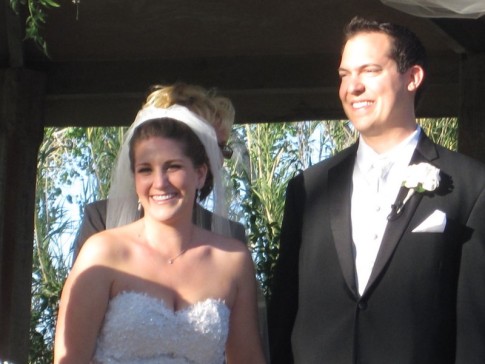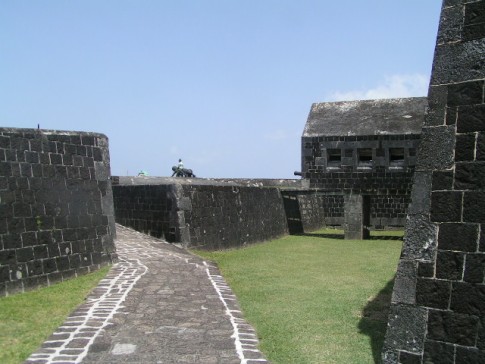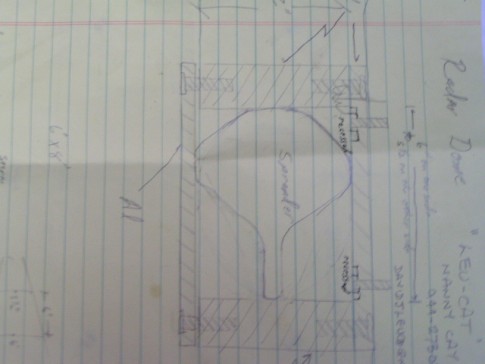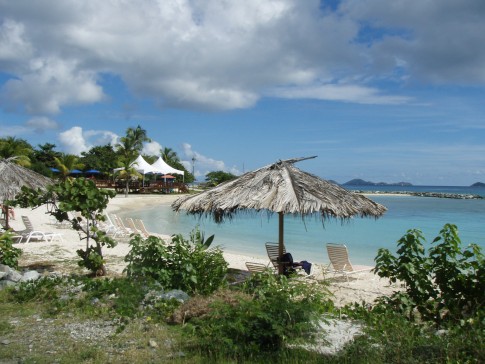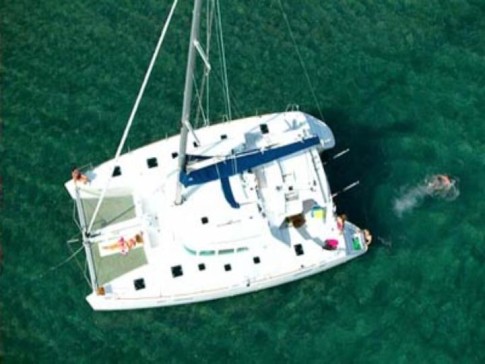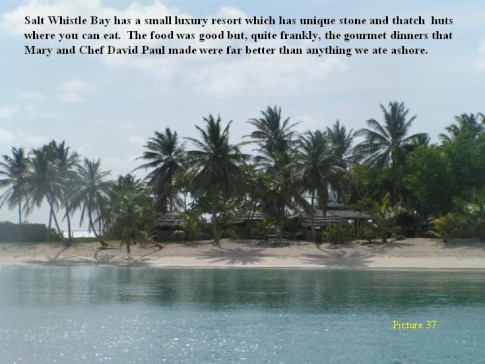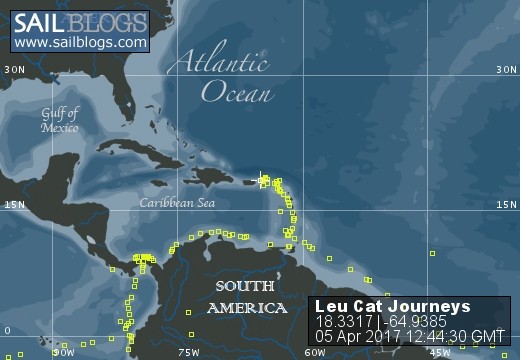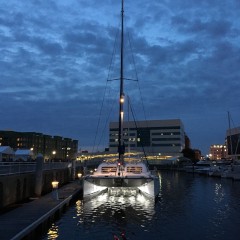
LeuCat Adventures
Join us in sharing our adventures as we sail around the world. NEW!!************************************************************************* GET A COPY OF OUR TECHNO-TIPS DOCUMENTS--JUST CLICK ON THEM UNDER THE "FAVORITES" HEADING ON THE RIGHT
24 September 2017
30 August 2017 | San Francisco, CA
07 July 2017
02 July 2017 | Simpson Bay Marina, Cole Bay, Sint Maarten
01 July 2017 | Simpson Bay Marina, Cole Bay, Sint Maarten
30 June 2017 | Simpson Bay Marina, Cole Bay, Sint Maarten
29 June 2017 | Simpson Bay Marina, Cole Bay, Sint Maarten
28 June 2017 | Simpson Bay Marina, Cole Bay, Sint Maarten
27 June 2017 | Simpson Bay Marina, Cole Bay, Sint Maarten
26 June 2017 | Simpson Bay Marina, Cole Bay, Sint Maarten
25 June 2017 | Simpson Bay Marina, Cole Bay, Sint Maarten
24 June 2017
24 June 2017 | Simpson Bay Marina, Cole Bay, Sint Maarten
22 June 2017 | Simpson Bay Marina, Cole Bay, Sint Maarten
21 June 2017 | Simpson Bay Marina, Cole Bay, Sint Maarten
20 June 2017 | Simpson Bay Marina, Cole Bay, Sint Maarten
18 June 2017 | Simpson Bay Marina, Cole Bay, Sint Maarten
17 June 2017 | Simpson Bay Marina, Cole Bay, Sint Maarten
16 June 2017 | Simpson Bay Marina, Cole Bay, Sint Maarten
15 June 2017 | Simpson Bay Marina, Cole Bay, Sint Maarten
Year 5 Day 143 The Story Of Mrs. Mary Watson Of Lizard Island: Part 1
25 June 2012 | Lizard island, Great Barrier Reef, AU
Dave/Misty and Blustery

As the weather here continues to be blustery and now a constant mist also has moved in, we are keeping snug in our boat. This punk weather is suppose to hang around for another day or two. Thus, I figure, what better time to start sharing with you the results of the research that I have done on the tragic story of what happened to Mrs. Mary Watson right in front of us in our anchorage.
The story of what happened to Mrs. Mary Watson in 1881 is most interesting and it is the stuff that legends are made from. In fact, Mrs. Watson through her story became an icon of the strong and resourceful Australian women during the late 1800s and 1900s. In typical fashion, the authorities and the press initially fabricated what had happen and innocent Aborigines were punished for the murders they were accused of doing. It was only after her, her newborn baby and her servant were found months later on a remote island, dead due to dehydration, that the truth came out.
Mrs. Watson had written two diaries which explained in detail what happened to them. The first diary was actually left in her stone cottage, apparently so search parties would know what they did and could start looking for them in the right direction. The second diary was located on the remote island she and her party were stranded on, near her remains.
I will be presenting this story in three parts over the next three days. The first part will present a little background information about her, the entries from her diaries, and information on how she and her party were found. This way, you will start with the truth of what happened.
The second part will include the historic newspaper articles which presented the fabricated stories of what happened, as told by the police officials that investigated her death. One needs to remember that this occurred during Australia's darkest history period regarding the Aborigines. Fear, hate, greed for land and water, and total lack of cultural understanding was the norm during those years.
The third and last part will include some very interesting insight from an Aborigine from Cooktown. He presents the reasons why the Aborigines attacked Mrs. Watson and her party in the first place.
*************************************************************************************
Mary Beatrice Phillips Watson (1860-1881) was born on January 17, 1860 at Fiddler's Green, Cornwall, England. She was the eldest child of Thomas Oxnam, a butcher and cattle-dealer, and his wife Mary. Before she and her family immigrated to Australia, she received a good educated in England. In 1877 her father suffered financial losses and decided to immigrate and settled at Maryborough, Queensland. At that time, Mary established a private school in Maryborough to augment the family finances but gave it up for a position as a governess. Dissatisfied with the conditions of her employment, she resigned and opened a private school in Cooktown.
It has been written that Mary was reserved, nervous and delicate but her ability as a pianist attracted many friends and suitors. On May 30, 1880 at Christ Church, Cooktown, she married Captain Robert E. Watson, a Scots seaman who shared a Bêche-de-mer station on Lizard Island with P. C. Fuller. (Note: Bêche-de-mer is basically sea cucumber and is still a highly prized food and medicine used by different oriental cultures.) On June 3, 1881 a son, Thomas Ferrier, was born at Cooktown. Mary returned to Lizard Island with her baby at the end of that month.
During the early spring (September and October) Captain Watson and his partner left Lizard Island to establish a new fishing station on an island that was about two hundred miles (322 km) to the North. In October, with just Mrs. Watson, her new born baby and two Chinese servants still on the island, Lizard Island was invaded by mainland Aboriginals who had come to the island for generations this time each year to harvest an animal that lived on the island, called goanna. They first killed Ah Leong, the Chinese gardener and later wounded the Chinese house-boy Ah Sam. They also threatened Mrs. Watson. She repulsed the attacks by a rifle and a pistol but soon realized it would be unsafe to stay on the island. As no boat was available she collected provisions and equipment and left with her baby and the wounded Chinese servant in a square ship's tank used for boiling Bêche-de-mer. This tank measured 3 feet by 4 feet. The Aboriginals, satisfied with removing her from the island, did not interfere with the departure.
Here is the true story as told by Mrs. Watson's Diary:
"September 27 (Note: I think she meant the 17th) 1881 - Blowing gale of wind. S. E. Ah Sam saw smoke in southerly direction supposed to be from native camp. Steamer bound north about 6 p m - Corea, I think."
"September 20 - Blowing strong breeze S. E., although not so hard as yesterday. No eggs. Ah Leong killed by the blacks over at the farm (about a quarter of a mile from the cottage) Ah Sam found his hat, which is the only proof."
"September 30. - natives down on the beach at 7 pm I fired rifle and revolver, and they went away."
"October 1.- Natives (four) speared Ah-Sam; four places in the right side and three on the shoulder. Got three spears from the natives. Saw 10 men altogether . . . "
"October 2. - Left Lizard Island on October 2 (Sun-day afternoon) in the tank in which the beche-de-mer is boiled. Got about three miles or four from the Lizards."
"October 4. - Made for the sandbank off the Lizards, but could not reach it. Got on a reef."
"October 5. - Remained on the reef all day on the look-out for a boat, but saw none."
"October 6. - Very calm morning. Able to pull the tank up to an island with three small mountains on it - Ah Sam went ashore to try to get water as ours was done. There were natives camped there, so we were afraid to go far away. We had to wait return of tide. Anchored under the mangroves."
"October 7. - Made for another island four or five miles, from one spoken of yesterday. Ashore, but could not find any water. Cooked some rice and clam fish. Moderate S. E. breeze. Stayed here all night. Saw a steamer bound north. Hoisted Ferrier's white and pink wrap, but did not answer us."
"October 8 - Changed anchorage of boat as the wind was freshening. Remained here all day looking out for a boat did not see any. Very cold night. Blowing very hard. No water."
"October 9 - Brought the tank ashore as far as possible with this morning's tide. Made camp all day under the trees. Blowing very hard. No water. Gave Ferriera dip in the sea. He is showing symptoms of thirst, and I took a dip myself. Ah Sam and self very parched with thirst. Ferrier is showing symptoms."
"October 10. Ferrier very bad with inflammation. Very much alarmed. No fresh water and no more milk but condensed. Self very weak. Really thought that I would have died last night (Sunday)."
"October 11. - Still all alive Ferrier very much better this morning. Self feeling very weak. I think it will rain today ; clouds very heavy ; wind not quite so hard . . . ."
"October 12. - No rain. Morning, fine weather. Ah Sam preparing to die. Have not seen him since 9 o'clock. Ferrier more cheerful. Self not feeling at all well. Have not seen a boat of any description. No water. Nearly dead with thirst." This was her last diary entry.
The bodies of the ill fated party were not discovered until early the following year. Returning from the north, the schooner Kate Kearney, commanded by Captain Bremner, anchored for the night on January 19, 1882 at No. 5 Island of the Howick group (now called Watson Island). A couple of native boys who worked as crew on board the Kate Kearney succeeded in catching some fish and were allowed to go ashore to cook them. One of the boys wandered inland in search of eggs and returned with an excited but incoherent story of having seen "I'm white dead fellow". Under his guidance a search party was formed which found the partly decomposed remains of Ah Sam lying on the beach under the shade tree from where he died. The tank that they had used to escape from Lizard Island was half filled with water from recent rains and was discovered not far from his corpse. Inside the tank the remains of Mrs. Watson and her baby boy were found. I find this very ironic. Mrs. Watson and her party all die from lack of fresh water and here she and her baby are found dead in a tub of fresh rain water. How sad is that...
The tank Mrs. Watson and her party used had been rowed, drifted with the currents and blown by the winds from Lizard Island, a distance of about 34 miles. When discovered, it still contained provisions, a chest of clothing and various other articles. The mother was lying on her back with the baby resting on her arm. She had not forgotten to bring a pillow for the baby's head and an umbrella to shield him from the burning tropical sun. By her side were a revolver and several cartridges and the diary written in pencil on scraps of note paper, lay close by the tank.
A public funeral was held for Mrs. Watson and her baby in Cooktown on January 29 1882. A large Chinese procession honored Ah Sam.
The story of what happened to Mrs. Mary Watson in 1881 is most interesting and it is the stuff that legends are made from. In fact, Mrs. Watson through her story became an icon of the strong and resourceful Australian women during the late 1800s and 1900s. In typical fashion, the authorities and the press initially fabricated what had happen and innocent Aborigines were punished for the murders they were accused of doing. It was only after her, her newborn baby and her servant were found months later on a remote island, dead due to dehydration, that the truth came out.
Mrs. Watson had written two diaries which explained in detail what happened to them. The first diary was actually left in her stone cottage, apparently so search parties would know what they did and could start looking for them in the right direction. The second diary was located on the remote island she and her party were stranded on, near her remains.
I will be presenting this story in three parts over the next three days. The first part will present a little background information about her, the entries from her diaries, and information on how she and her party were found. This way, you will start with the truth of what happened.
The second part will include the historic newspaper articles which presented the fabricated stories of what happened, as told by the police officials that investigated her death. One needs to remember that this occurred during Australia's darkest history period regarding the Aborigines. Fear, hate, greed for land and water, and total lack of cultural understanding was the norm during those years.
The third and last part will include some very interesting insight from an Aborigine from Cooktown. He presents the reasons why the Aborigines attacked Mrs. Watson and her party in the first place.
*************************************************************************************
Mary Beatrice Phillips Watson (1860-1881) was born on January 17, 1860 at Fiddler's Green, Cornwall, England. She was the eldest child of Thomas Oxnam, a butcher and cattle-dealer, and his wife Mary. Before she and her family immigrated to Australia, she received a good educated in England. In 1877 her father suffered financial losses and decided to immigrate and settled at Maryborough, Queensland. At that time, Mary established a private school in Maryborough to augment the family finances but gave it up for a position as a governess. Dissatisfied with the conditions of her employment, she resigned and opened a private school in Cooktown.
It has been written that Mary was reserved, nervous and delicate but her ability as a pianist attracted many friends and suitors. On May 30, 1880 at Christ Church, Cooktown, she married Captain Robert E. Watson, a Scots seaman who shared a Bêche-de-mer station on Lizard Island with P. C. Fuller. (Note: Bêche-de-mer is basically sea cucumber and is still a highly prized food and medicine used by different oriental cultures.) On June 3, 1881 a son, Thomas Ferrier, was born at Cooktown. Mary returned to Lizard Island with her baby at the end of that month.
During the early spring (September and October) Captain Watson and his partner left Lizard Island to establish a new fishing station on an island that was about two hundred miles (322 km) to the North. In October, with just Mrs. Watson, her new born baby and two Chinese servants still on the island, Lizard Island was invaded by mainland Aboriginals who had come to the island for generations this time each year to harvest an animal that lived on the island, called goanna. They first killed Ah Leong, the Chinese gardener and later wounded the Chinese house-boy Ah Sam. They also threatened Mrs. Watson. She repulsed the attacks by a rifle and a pistol but soon realized it would be unsafe to stay on the island. As no boat was available she collected provisions and equipment and left with her baby and the wounded Chinese servant in a square ship's tank used for boiling Bêche-de-mer. This tank measured 3 feet by 4 feet. The Aboriginals, satisfied with removing her from the island, did not interfere with the departure.
Here is the true story as told by Mrs. Watson's Diary:
"September 27 (Note: I think she meant the 17th) 1881 - Blowing gale of wind. S. E. Ah Sam saw smoke in southerly direction supposed to be from native camp. Steamer bound north about 6 p m - Corea, I think."
"September 20 - Blowing strong breeze S. E., although not so hard as yesterday. No eggs. Ah Leong killed by the blacks over at the farm (about a quarter of a mile from the cottage) Ah Sam found his hat, which is the only proof."
"September 30. - natives down on the beach at 7 pm I fired rifle and revolver, and they went away."
"October 1.- Natives (four) speared Ah-Sam; four places in the right side and three on the shoulder. Got three spears from the natives. Saw 10 men altogether . . . "
"October 2. - Left Lizard Island on October 2 (Sun-day afternoon) in the tank in which the beche-de-mer is boiled. Got about three miles or four from the Lizards."
"October 4. - Made for the sandbank off the Lizards, but could not reach it. Got on a reef."
"October 5. - Remained on the reef all day on the look-out for a boat, but saw none."
"October 6. - Very calm morning. Able to pull the tank up to an island with three small mountains on it - Ah Sam went ashore to try to get water as ours was done. There were natives camped there, so we were afraid to go far away. We had to wait return of tide. Anchored under the mangroves."
"October 7. - Made for another island four or five miles, from one spoken of yesterday. Ashore, but could not find any water. Cooked some rice and clam fish. Moderate S. E. breeze. Stayed here all night. Saw a steamer bound north. Hoisted Ferrier's white and pink wrap, but did not answer us."
"October 8 - Changed anchorage of boat as the wind was freshening. Remained here all day looking out for a boat did not see any. Very cold night. Blowing very hard. No water."
"October 9 - Brought the tank ashore as far as possible with this morning's tide. Made camp all day under the trees. Blowing very hard. No water. Gave Ferriera dip in the sea. He is showing symptoms of thirst, and I took a dip myself. Ah Sam and self very parched with thirst. Ferrier is showing symptoms."
"October 10. Ferrier very bad with inflammation. Very much alarmed. No fresh water and no more milk but condensed. Self very weak. Really thought that I would have died last night (Sunday)."
"October 11. - Still all alive Ferrier very much better this morning. Self feeling very weak. I think it will rain today ; clouds very heavy ; wind not quite so hard . . . ."
"October 12. - No rain. Morning, fine weather. Ah Sam preparing to die. Have not seen him since 9 o'clock. Ferrier more cheerful. Self not feeling at all well. Have not seen a boat of any description. No water. Nearly dead with thirst." This was her last diary entry.
The bodies of the ill fated party were not discovered until early the following year. Returning from the north, the schooner Kate Kearney, commanded by Captain Bremner, anchored for the night on January 19, 1882 at No. 5 Island of the Howick group (now called Watson Island). A couple of native boys who worked as crew on board the Kate Kearney succeeded in catching some fish and were allowed to go ashore to cook them. One of the boys wandered inland in search of eggs and returned with an excited but incoherent story of having seen "I'm white dead fellow". Under his guidance a search party was formed which found the partly decomposed remains of Ah Sam lying on the beach under the shade tree from where he died. The tank that they had used to escape from Lizard Island was half filled with water from recent rains and was discovered not far from his corpse. Inside the tank the remains of Mrs. Watson and her baby boy were found. I find this very ironic. Mrs. Watson and her party all die from lack of fresh water and here she and her baby are found dead in a tub of fresh rain water. How sad is that...
The tank Mrs. Watson and her party used had been rowed, drifted with the currents and blown by the winds from Lizard Island, a distance of about 34 miles. When discovered, it still contained provisions, a chest of clothing and various other articles. The mother was lying on her back with the baby resting on her arm. She had not forgotten to bring a pillow for the baby's head and an umbrella to shield him from the burning tropical sun. By her side were a revolver and several cartridges and the diary written in pencil on scraps of note paper, lay close by the tank.
A public funeral was held for Mrs. Watson and her baby in Cooktown on January 29 1882. A large Chinese procession honored Ah Sam.
Comments
| Vessel Name: | Leu Cat |
| Vessel Make/Model: | Lagoon 440 |
| Hailing Port: | Dana Point, CA |
| Crew: | Mary Margaret and Dave Leu |
| About: | Our goals are to spend the next 10 to 15 years cruising around the world and sharing this adventure with family and friends. |
| Extra: | S/V Leu Cat is Lagoon 440 rigged for blue water sailing. It is 44 feet long with a 25 foot beam |
| Social: |
Leu Cat's Photos - (Main)
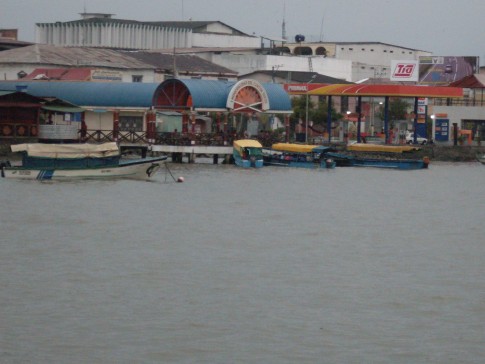 |
Here are some pics that I took while visiting w/ my parents in the Galapagos Islands
22 Photos
Created 29 March 2010
|
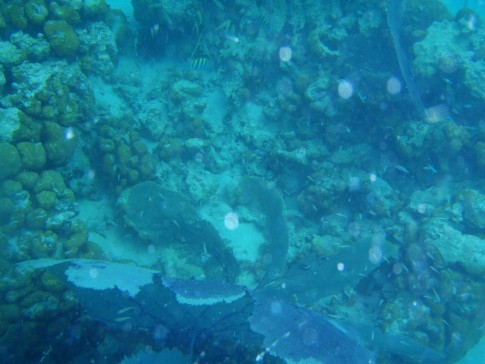 |
Pictures of the sea life in the cut between Little Jost Van Dyke and Green Cay, BVI
30 Photos
Created 17 March 2008
|
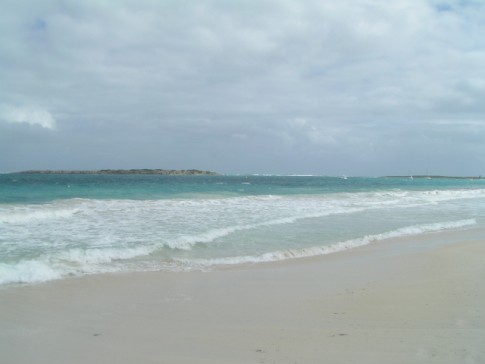 |
Here are a number of pictures of St. Maarten and the places we visited
36 Photos
Created 21 January 2008
|
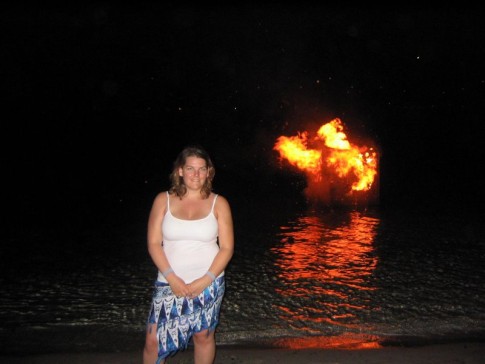 |
Join us as we explore the Spanish, American, and British Virgin Ilsands.
15 Photos
Created 20 October 2007
|
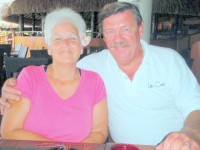
Who: Mary Margaret and Dave Leu
Port: Dana Point, CA
Table of Contents
Favorites
- Get A Copy Of Our Techno Tips Document
- Galley Tips For Cruisers
- Land Travel Tips For Cruisers
- Get A Copy Of Our Yanmar Drive Cone Repair Manual
- Updated Pirate Report
- My Bother Don's and Debbie's Blog
- A Great Sailing Blog
- A remarkable Sail Blog
- Celestial Navigation
- Here is Another Great Sailing Blog
- S/V Totem's Sail Blog
- S/V Infini's Blog Site



